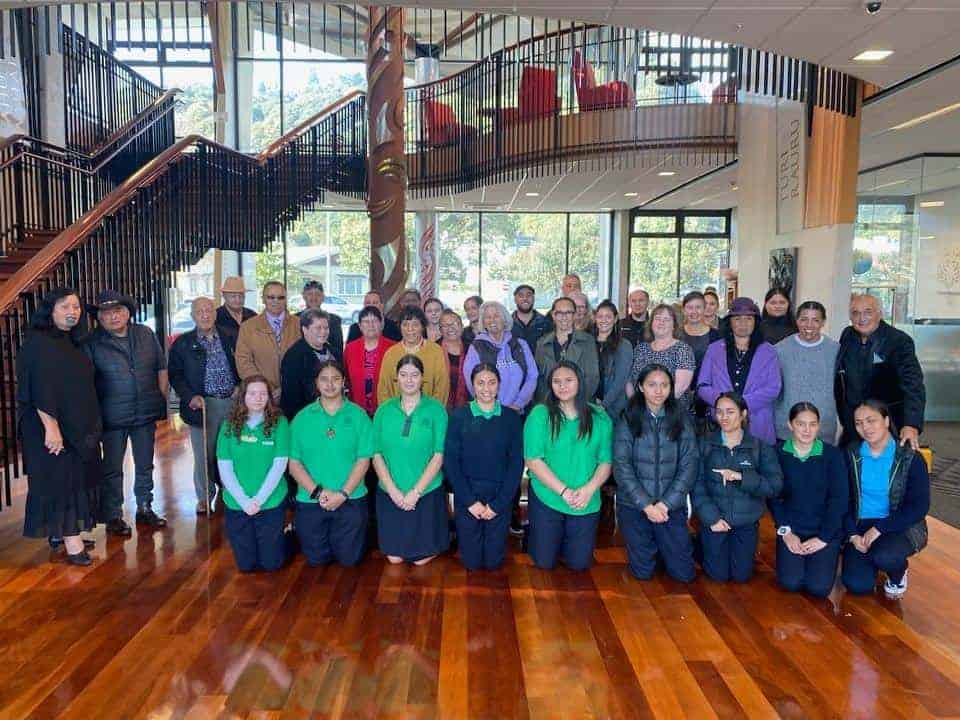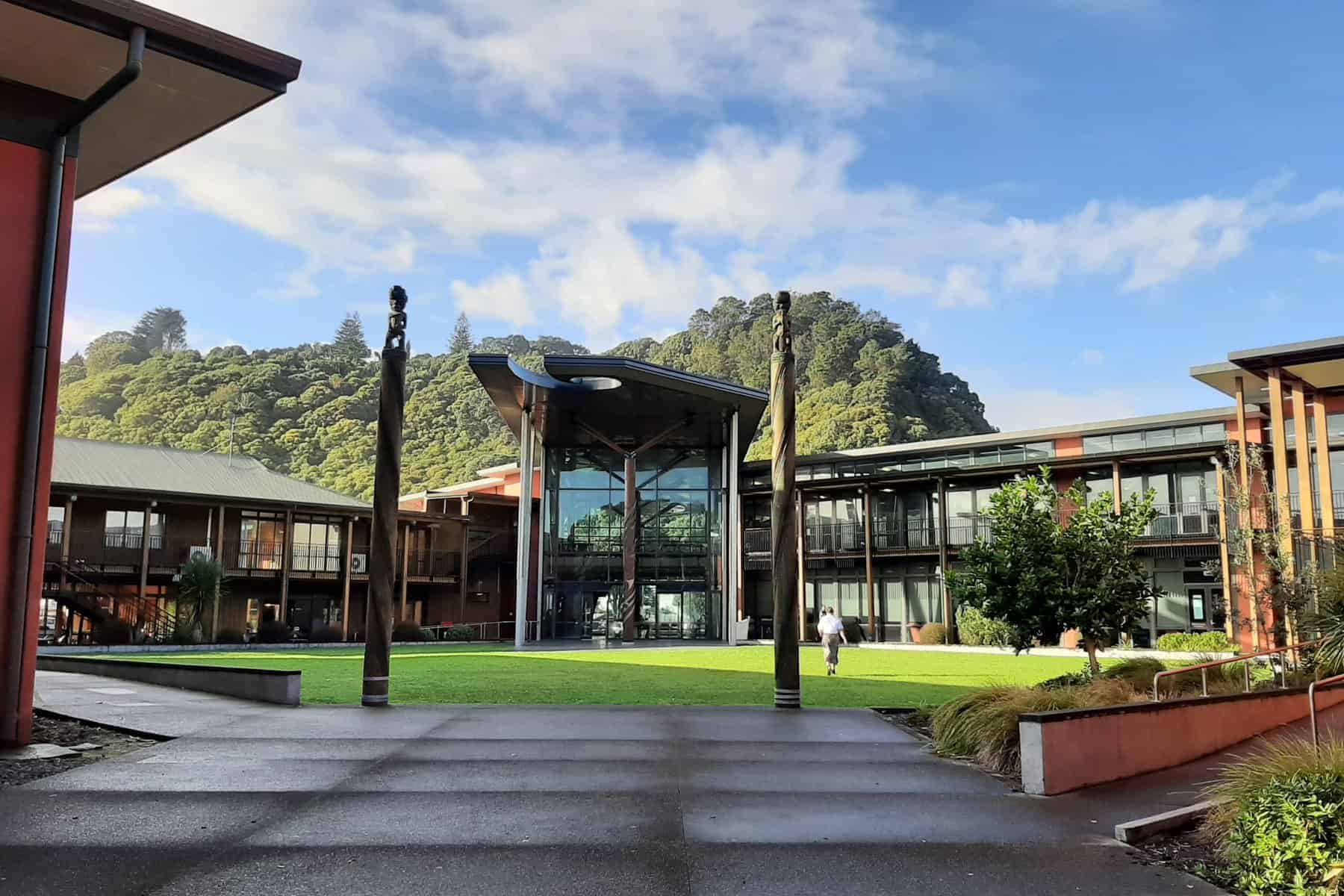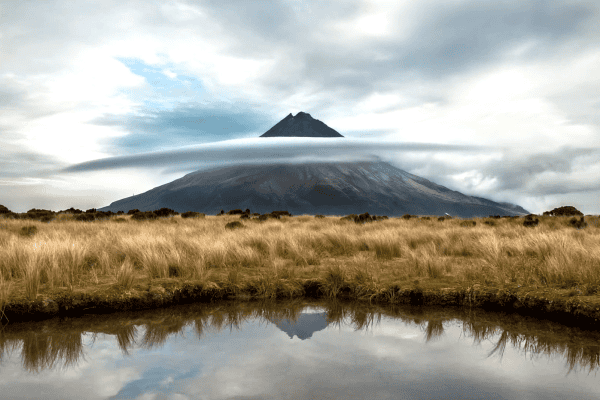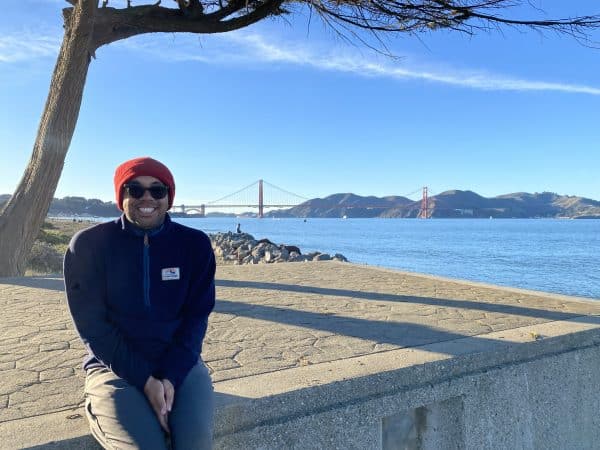Whanake Te Kura i Tawhiti Nui Mātauranga Māori and Science Research Symposium with Mataatua community, Whakatāne, May 2023
By Caitlin Carew
The beautiful Te Whare Wānanga ō Awanuiārangi campus sits underneath the distinctive bush-clad escarpment of Whakatāne. On a Wednesday morning in mid-May, after a day and night of heavy rain, the sun came out and a group of researchers, Resilience Challenge staff, and community members young and old gathered at the edge of the campus, waiting to be called on for the pōwhiri.
For the Whanake te Kura i Tawhiti Nui programme whānau, this was the realisation of a long-held aspiration to hold their annual wānanga in this special place. The invitation had been extended by Prof Taiarahia Black (known to his community and colleagues as Papa Tai), but due to Covid and other disruptions, it has taken until now to make the visit a reality.
The kaupapa of the event was to showcase resilience research being carried out by kairangahau (researchers) within Whanake te Kura, but to also share the experiences and stories of Mataatua uri knowledge holders.
The aforementioned wild weather resulted in a State of Emergency being declared in Tāmaki Makaurau, and cancelled and delayed flights for many of the whānau. So, resilience and adaptation was having to be put into practice as well as being the kaupapa of the day’s discussions.

After the pōwhiri and shared kai, we were privileged to hear from keynote speaker Tā Hirini Moko Mead, who is now aged 96 but as Papa Tai quipped, “sharp as a pin”. Tā Hirini spoke about mātauranga as a knowledge system, and that before it was mātauranga Māori it was mātauranga Tahiti, mātauranga Rarotonga. The navigators who came to Aotearoa held deep knowledge of the stars and astronomy. They were trusted by those who joined them for the journey.
After this rich kōrero, we heard from Whanake te Kura programme co-leads Dr Acushla Dee Sciascia and Kristie-Lee Thomas. They provided a snapshot of the programme’s research team and kaupapa, and shared some pressing disaster and climate challenges and opportunities for both hāpori Māori and kairangahau. They reiterated how central mātauranga Māori is in addressing underlying vulnerabilities stemming from colonisation and for navigating Māori futures in a rapidly changing world.
Dee and Kristie-Lee also introduced Hautapu Baker, the new Vision Mātauranga Knowledge Broker for the Resilience Challenge, who will be supporting the Whanake te Kura team and our other kaupapa Māori researchers as we enter the final year of the Challenge.
Jon Procter is a respected Professor of Natural Hazards at Massey University, but the kōrero he gave us was very different to a regular science presentation. He began by introducing us to the rich Māori ontology relating to rocks, geology and volcanoes. He told us that ancestors who lived in volcanic regions developed deep knowledge about maunga and their behaviour.
Jon and colleagues have spent 15 years working with Ngāti Rangi kaitiaki, who look to Maunga Ruapehu as their koro. They know the dangers and understand they are part of a normal pattern of behaviour for the maunga. “They know the ash will blow away and cloak and nourish the land,” Jon said. “They will always come back because they whakapapa to the maunga.”
Through their work together, Jon and others have learned from iwi kaitiaki, supported them to establish data, and are working to make space for their traditional volcanic monitoring system based on observations of wai.
Independent kairangahau Lara Taylor (E Oho! Awakening Aotearoa) resides in cyclone-hit Muriwai, and due to the latest flooding and slips, wasn’t able to get to Whakatāne. Lara zoomed into the symposium to share her kaupapa.
Lara, in collaboration with Papa Pounamu (the national forum for Māori planners and kaitiaki), has been running a series of online wānanga to progress Māori resistance and resilience through the national planning reforms that are currently underway. The research asks, who will this system be for? “We want to determine what a new environmental planning system must look like, to be fit for OUR purpose.”
Lara says much of the mess we’re in with regards to the health of our water, and the recent disastrous flooding, erosion and landslides, are due to colonisation and a system that separates our environment from ourselves. The collective is working to bring about a Te Tiriti-centric planning system that works for te taiao and communities. “We need to wake up, stand up, make change.”
As part of her research, Lara is holding a marae-based noho wānanga for tāngata whenua & tāngata Tiriti to gather and share ideas about holistic, Te Tiriti-centric government and management of te taiao. The group is also engaging with the Ministry for the Environment, but on their terms, through a series of online wānanga.
After breaking for a delicious kai featuring boil up, locally harvested tuna (eel) and steamed pudding, we returned to hear from the community about their experiences and challenges surrounding te taiao and resilience.
Dr Hiria Hape hails from Ruatoki in Te Urewera. She says she doesn’t like the word ‘resilient,’ but says her people are used to the floods. She shared a whakatauki – if you’re caught up in floods in Te Urewera, seek shelter and stay put, come out once the floodwaters have come down.
Whaea Hiria says our whenua is beautiful, but it can also be quite frightening. But we don’t want to raise our tamariki with that fear of the whenua. We need to research and understand te taiao – for example, the manga (streams) that feed our awanui (large rivers). How were they used in the past?
Rapaera Black (brother of Papa Tai) told stories from their childhood, and Tai’s journey to becoming an academic. He says Tai has made the whānau proud. Matua Rapaera also spoke about the health of the tribe’s taonga, and how it is suffering. He practices customary harvest and says he can tell from the abundance of tuna and other ika (he provided the tuna we had for lunch).
Te Hiri Ripene of Ōpōtiki told the story of Whakatōhea people (eastern Bay of Plenty iwi) being shackled and forced to board a boat as part of the raupatu (land confiscations) in the New Zealand Wars. She has been told by Papa Tai to write the book about what happened! She shared the journey of the community’s kapa haka group, Ōpōtiki Mai Tawhiti, which has been going for 28 years. “We started the group to keep alive the waiata and stories of the nannies.” The group has taken their history to the world, says Whaea Te Hiri. A new generation is coming through. “The kids know, once they’re 14, they’re on the floor.” In this way, they are keeping the mātauranga alive.
This inspiring kōrero wrapped up the symposium programme.
Ngā mihi nui to everyone involved: Dee and Kristie-Lee who developed the kaupapa, Papa Tai for generously hosting everyone, Tā Hirini Moko Mead for the inspiring keynote, Derrylea Hardy of Massey University and Karamea Tukukino of Awanuiārangi who did much of the organising, and everyone who spoke, provided kai and otherwise supported the kaupapa.




